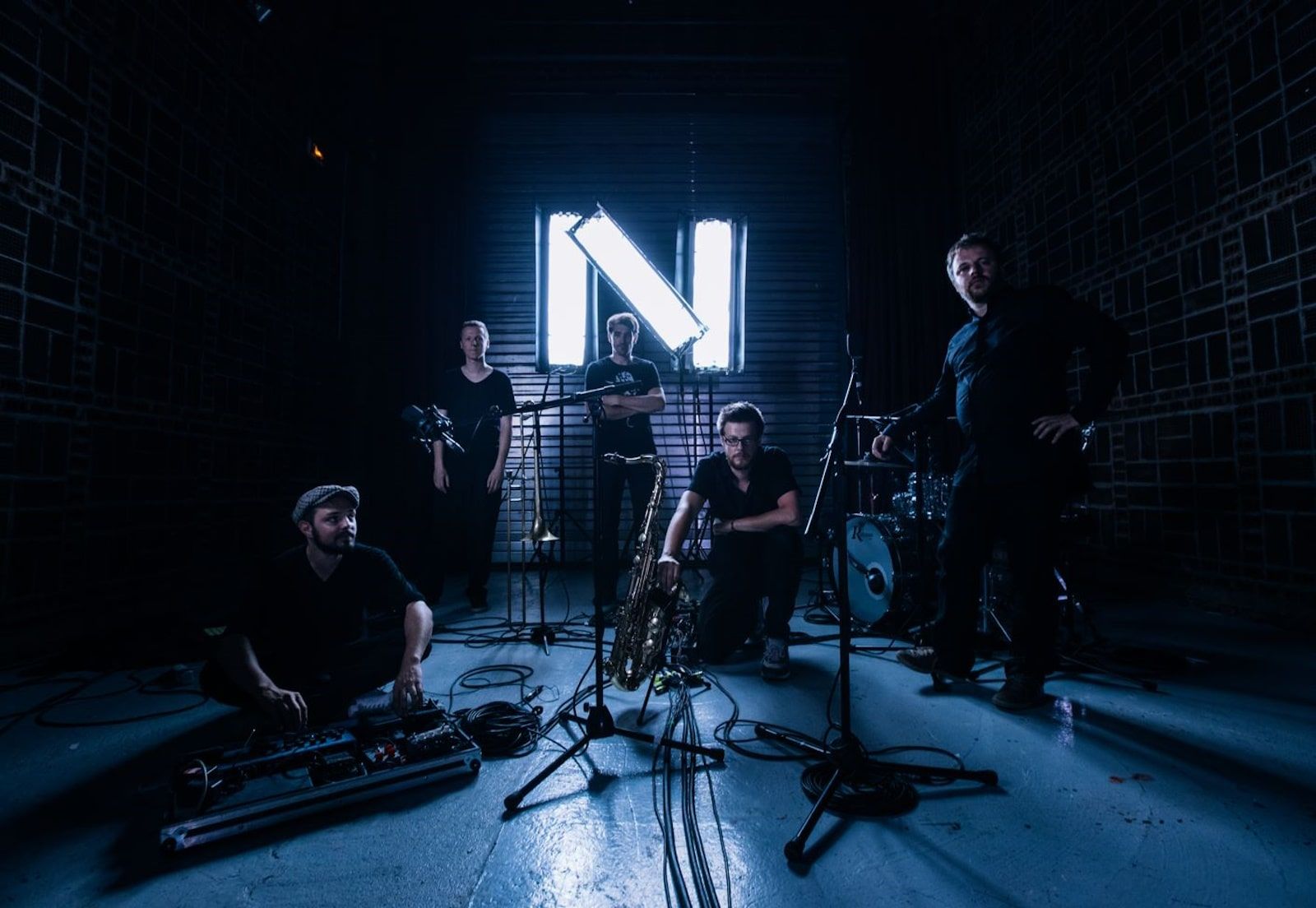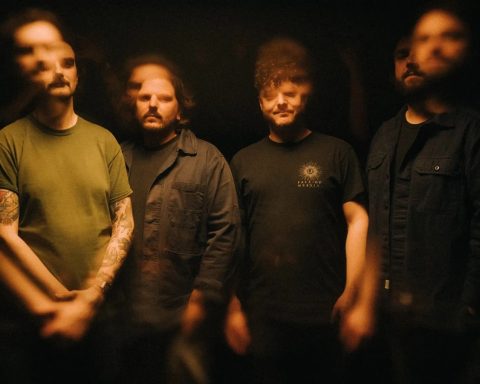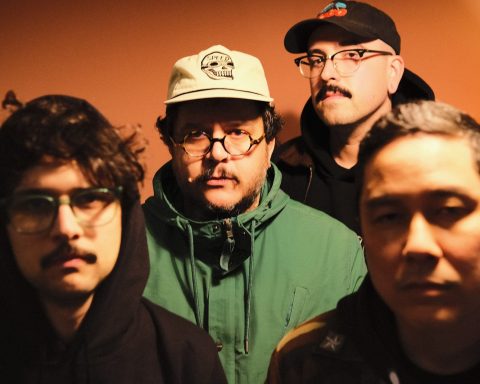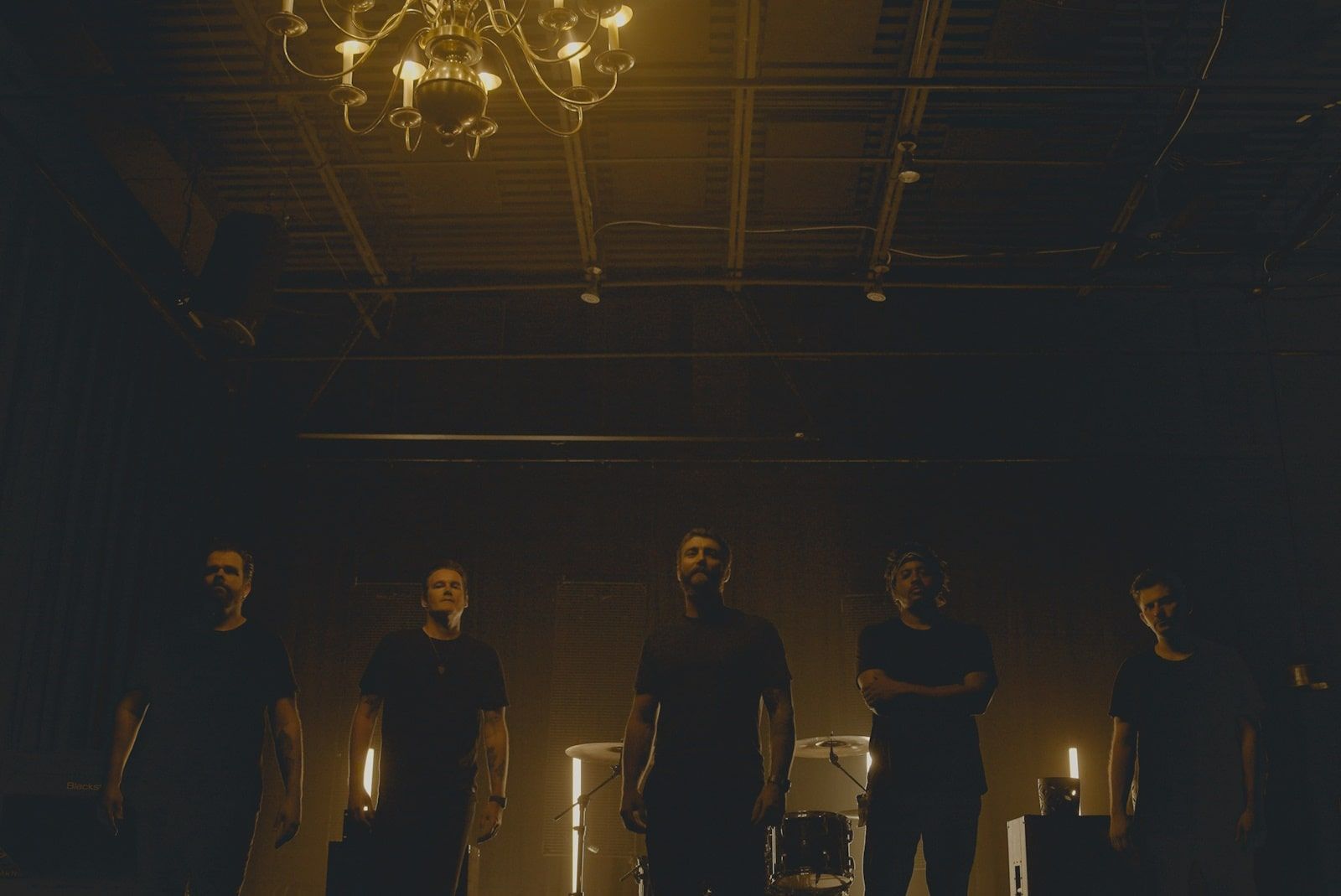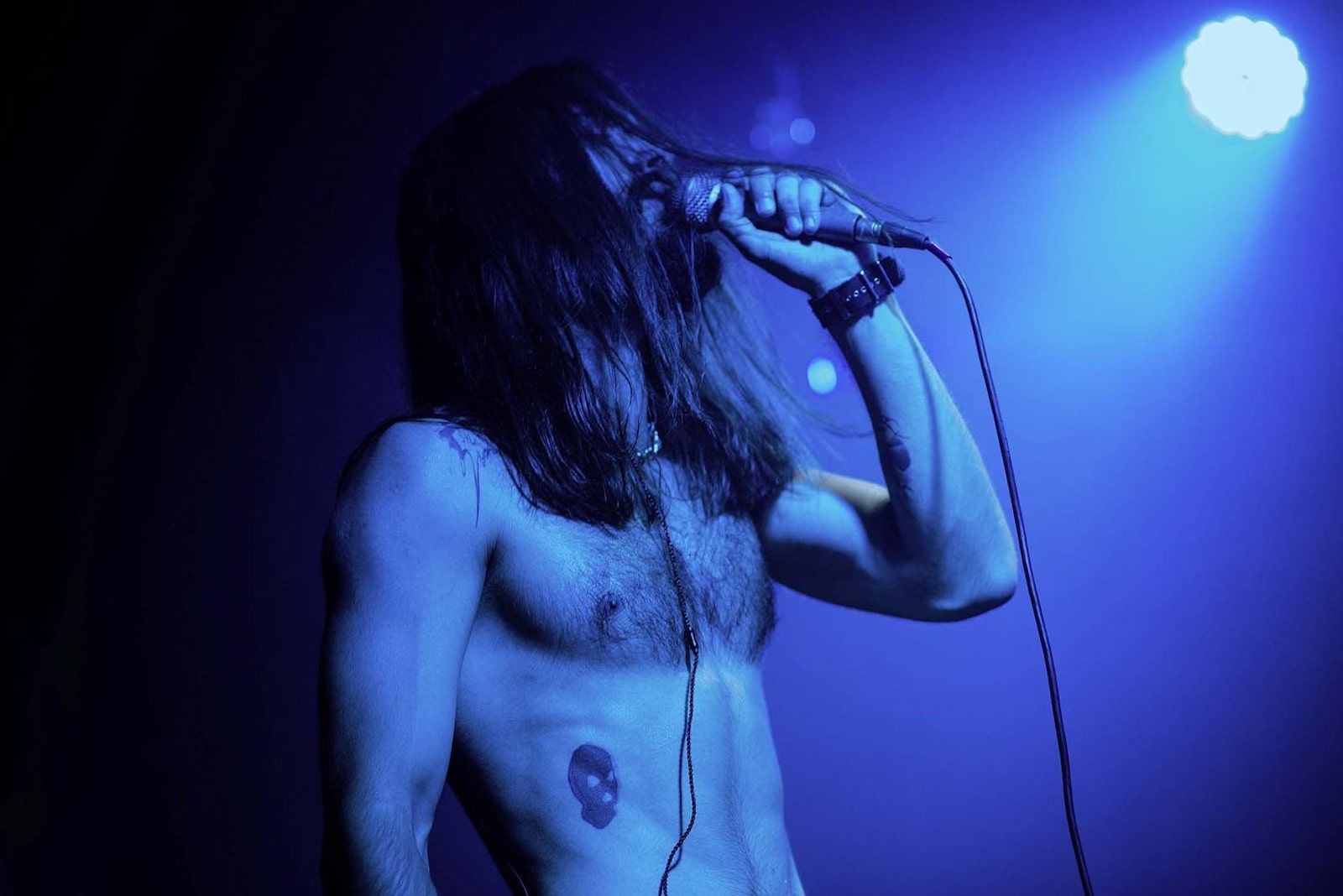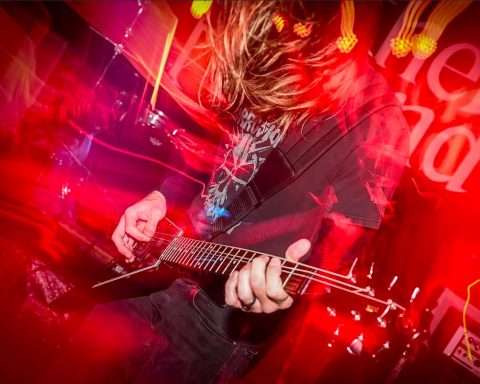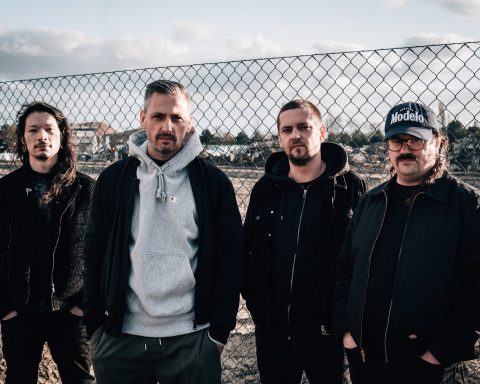If you’ve ever tried to capture the transient beauty of a sunset or the first light that crawls across the sky at dawn, you might understand the poetic ambitions of Notilus. The French quintet, esteemed for their groundbreaking debut “I,” offers another atmospheric sojourn with their second full-length album aptly titled “II.”
Here is an ensemble that’s audibly introspective, an act that takes you through shadowy evenings and gleaming dawns, as they put it, while meandering through genres like Jazz, Techno, and Ambient music. The mélange of these disparate musical styles is not a compromise, but a synthesis—much like the twilight hours that reside between night and day.
Today, we’re pleased to give you their new track “Aria“, a special live performance video, and our in-depth interview with the band below.
“What Dusk and Dawn have in common is that they are situated BETWEEN two states of luminosity… These poetic images are an interesting thread to follow when you want to be musically on the edge of something, just before, just after and so on,” the band mentions in our interview.
While their debut was lauded for its ingenuity, Notilus states that the acclaim it received had little influence over their artistic approach for “II.” This follow-up album was shaped more by the passage of time and a democratic creative process rather than external validation. It’s an exploration marked by what they describe as rawness and freedom.
The band attributes this sonic liberation to their DIY recording environment and a heightened emphasis on live recording. “II” trades the polished surfaces of its predecessor for something more spontaneous, an auditory texture made of rougher elements, and as they note, “a lot more ‘live’ game situations than overdubs, more spontaneous decisions, more improvisation.”
“Suspended time” is a phrase the band uses to describe their sound—a fluidity in musical temporality that perhaps best summarizes their oeuvre. It’s a sensation the band members felt as they ventured through their musical landscape, and they hope listeners will too.
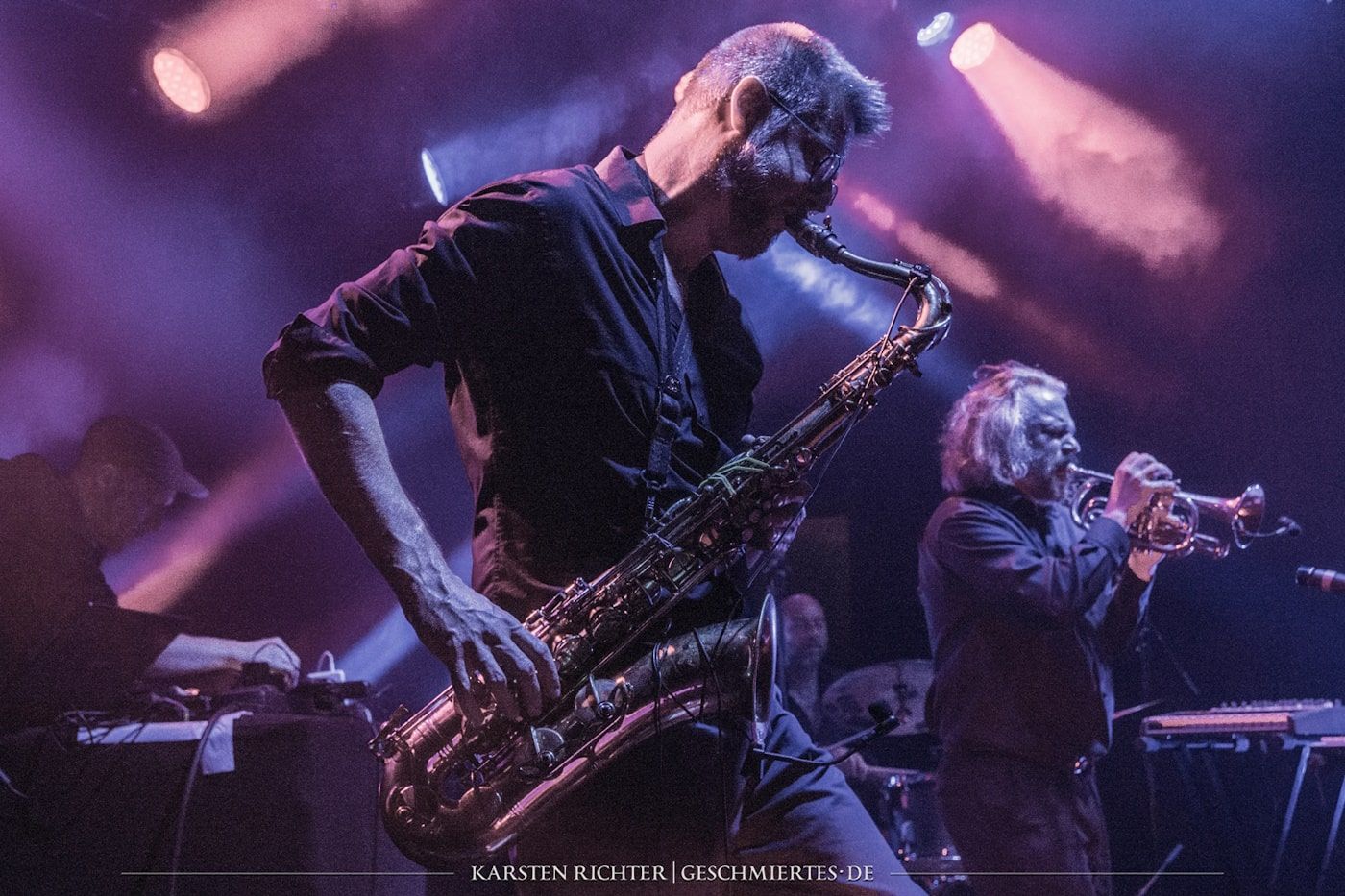
“We hope Notilus II reflects what we love about music. Both the festive listening, the dancing, but also the individual listening that invites an inner journey,” the band reveals.
Sonic Sincerity Over Hyper-Productivity
What seems to elevate Notilus above many of their contemporaries is their open resistance to the pincers of “ultra-productivism.” Instead of operating under commercial pressures, they commit to a journey of “sincere, liberated expression.” The band’s array of sound machinery is no cacophonous racket but serves as an articulate extension of their narrative—organic noises, breaths, and rubatos contribute to an experience that defies categorization.
While the next steps for Notilus include improvisational performances and potential collaborations, their existing and future fan base can look forward to an ongoing musical expedition that refuses to settle.
As the band celebrates the release of “II,” it becomes evident that Notilus is not just a musical act but a sonic philosophy, an ethereal map through the universal languages of music, mood, and meaning. They’re not asking you to merely listen; they’re inviting you to experience and reflect. And as they continue to carve out their niche in this ever-crowded musical universe, one thing is abundantly clear: this journey is far from over.
See the full interview below.
Notilus live:
09.11.23 Strasbourg (fr) – Espace Django
24.11.23 Paris (fr) – Gare Jazz
25.11.23 Paris (fr) – Gare Jazz
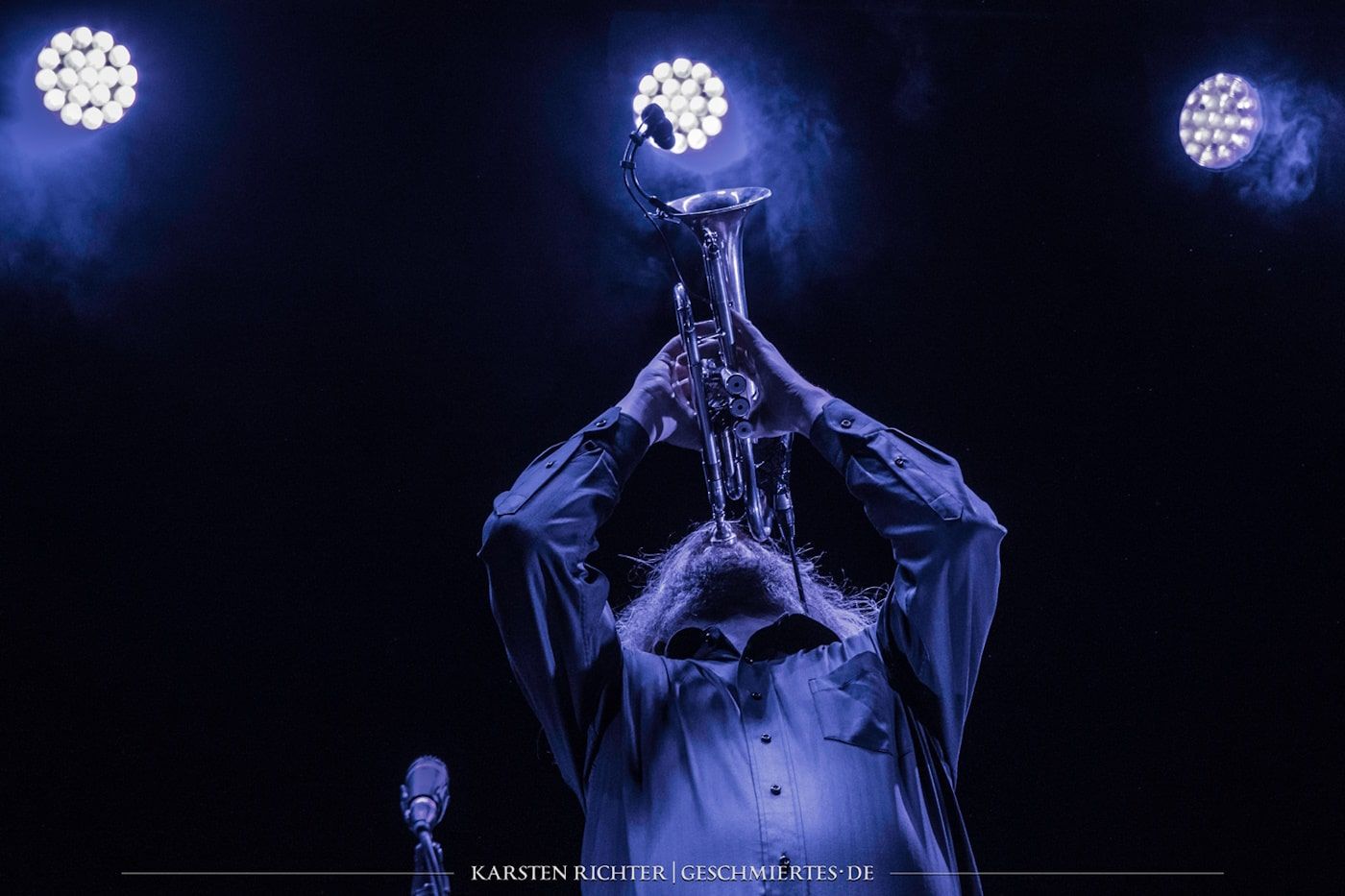
Your debut album “I” received significant praise for its blending of genres. How did the positive reception influence your approach to your follow-up album “II”?
The positive reception of our first album encouraged us to go ahead and make a second one! But that didn’t really influence the band’s artistic approach, which evolves in its own way, according to the passage of time, individual and collective desires line-up changes, etc.
You describe “II” as more “raw and free” than your debut. Can you explain how this newfound freedom is reflected in your music?
First of all, the sound: the entire second album was recorded in our rehearsal space, with equipment borrowed here and there. Mathieu (drums) and Philippe (machines) know how to do it! And the sound engineers in our team helped us to perfect the installation.
Then there’s the way we do it: a lot more “live” game situations than overdubs, more spontaneous decisions, more improvisation. We were looking for something lively and organic.
When you listen to Notilus II, you notice a more “raspy” sound with lots of organic elements (noises, breaths etc.) and much less classical forms than on the first album.
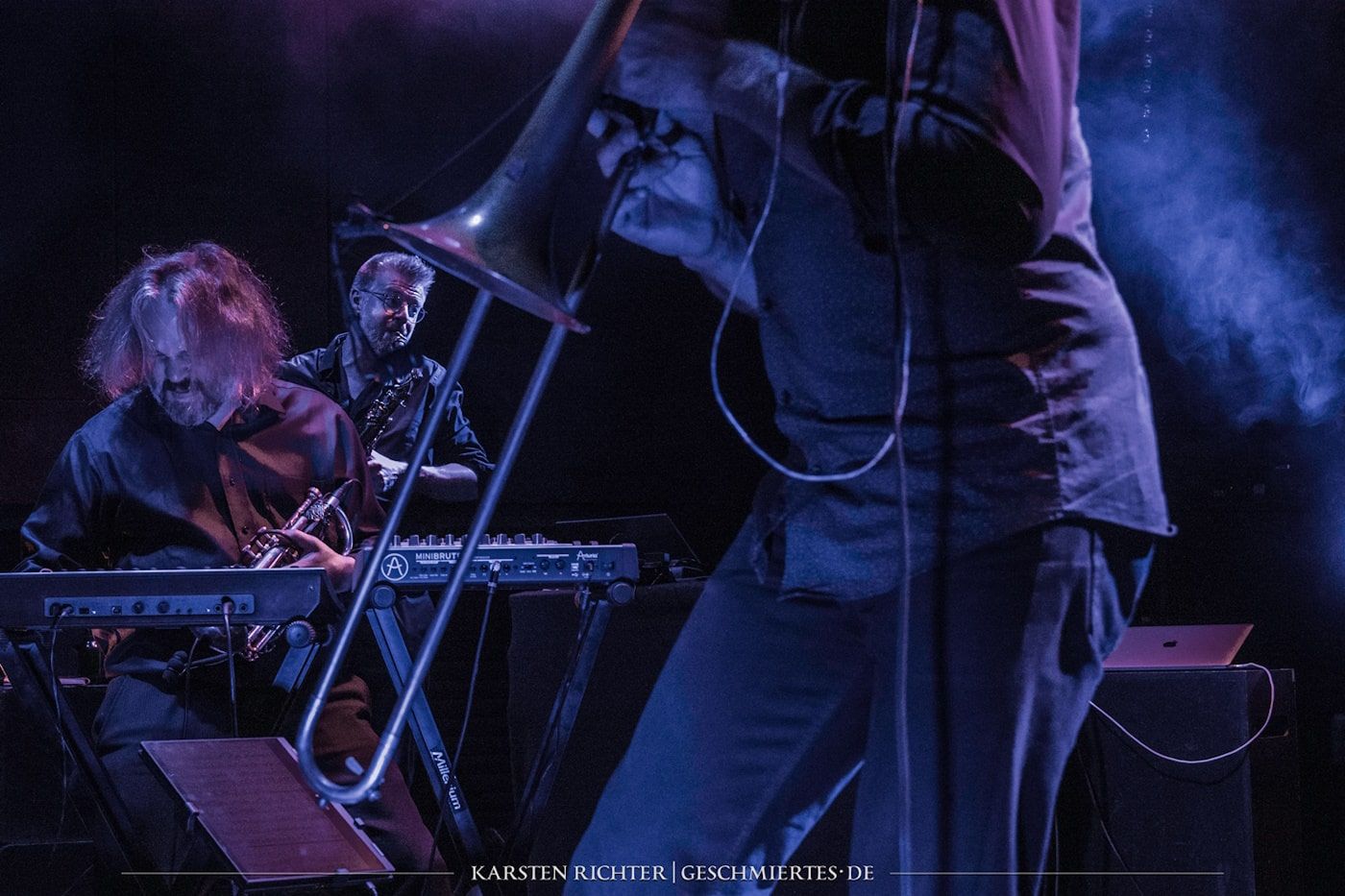
With the term “suspended time,” are you implying a non-linear experience for the listener? How do you achieve this sense of timelessness in your tracks?
Suspended time simply refers to fluid time (opposed at streaked time according to Pierre Boulez*)* and refers to ambient in electronic music, or simply to the rubato traditionally found in music.
(P. Boulez says in french temps lisse – where the regular pulse tends to disappear & temps strié – where the regular puls is felt)
As we explored this territory, we had sensations of suspended time. Perhaps the listener will too!
What was the inspiration behind incorporating both “evening shadows and luminous mornings” in the album?
What Dusk and Dawn have in common is that they are situated BETWEEN two states of luminosity, of air density, between two well-defined social times (night and day). These poetic images are an interesting thread to follow when you want to be musically on the edge of something, just before, just after and so on.
Your music spans multiple genres like Jazz, Techno, and Ambient. How do you manage to keep a cohesive sound while venturing through these diverse styles?
The various styles mentioned reflect the musical cultures of the band members. By respecting each other, respecting each other’s musical cultures, confronting them, getting them to talk to each other, we simply construct a music resulting from these interactions, a music which, we hope, will have its own sound. Basically, there’s not much reason why the sound shouldn’t be cohesive.
It’s mentioned that your music involves “self-reflection.” Could you talk more about this? How does “II” invite listeners to engage in self-reflection?
We hope Notilus II reflects what we love about music. Both the festive listening, the dancing, but also the individual listening that invites an inner journey! Try listening to it quietly at home with a good glass of wine (or whatever), it works well!
Your musical journey in “II” is described as crossing “vast tundras” and ascending “snowy mountain ranges.” Is there a narrative or story arc that listeners should be aware of?
These are more or less conscious poetic images before, during and after the making of the album. We had in mind images of vast, emaciated spaces. But the listener does and sees what he wants! And so much the better!

You’ve got a unique orchestration. How do you all come together to create your sound? Is there a leader, or is it a collective process?
It’s a collective process that includes individual work, but there’s no lead.
On “Notilus II”, the orchestration came about mainly as a result of being in the studio together.
Can you elaborate on your use of “machines” and “effects” in the orchestration? How do they contribute to the atmospheric layers in your music?
The question of the timbral encounter between elements is central. At what point do the boundaries between the different components of sound disappear? What provokes this encounter? When is it interesting to have dissociation? For example, effects pedals on brass instruments sometimes serve as bridges between acoustic instruments and electronic sounds, but sometimes it’s simply a question of working on playing modes.
What kind of sonic textures were you aiming to explore in “II”? Were there any particular instruments or technologies that were crucial for this?
We’ve gone for a more raw, less formatted, less clean, more deviant sound. We use simple technologies common to our time (synthesizers, sequencers, reverb pedals, distortion, etc.). Simplification itself is an important part of our process.
Do you have any influences from French musical traditions or cultural elements that find their way into your music?
Our musical influences are multiple, diverse and constantly evolving. Culturally, we’re trying to extricate ourselves from the clutches of ultra-productivism and move towards sincere, liberated expression.
What’s next for Notilus? Are there already plans for more musical explorations or potential collaborations?
We’re currently playing every Wednesday evening at “La Gare Jazz” (Paris 19th), until December 20, 2023. We improvise a lot and try out new experiences with the public. We invite many different musician friends and projects every Wednesday, which gives us a lot of inspiration.
We’ll be celebrating the release of “Notilus II” on November 24 and 25 at the same venue, as well as on November 09 with ATOEM at Django (Strasbourg).
We want to keep experimenting and go our own way slowly, and we’re grateful when our music or our approach appeals to other human beings.
Keep an ear out for Notilus’ upcoming album “II,” slated for release on 27th October 2023. The album will be available in multiple formats: CD, LP, and Digital, courtesy of Denovali Records.



